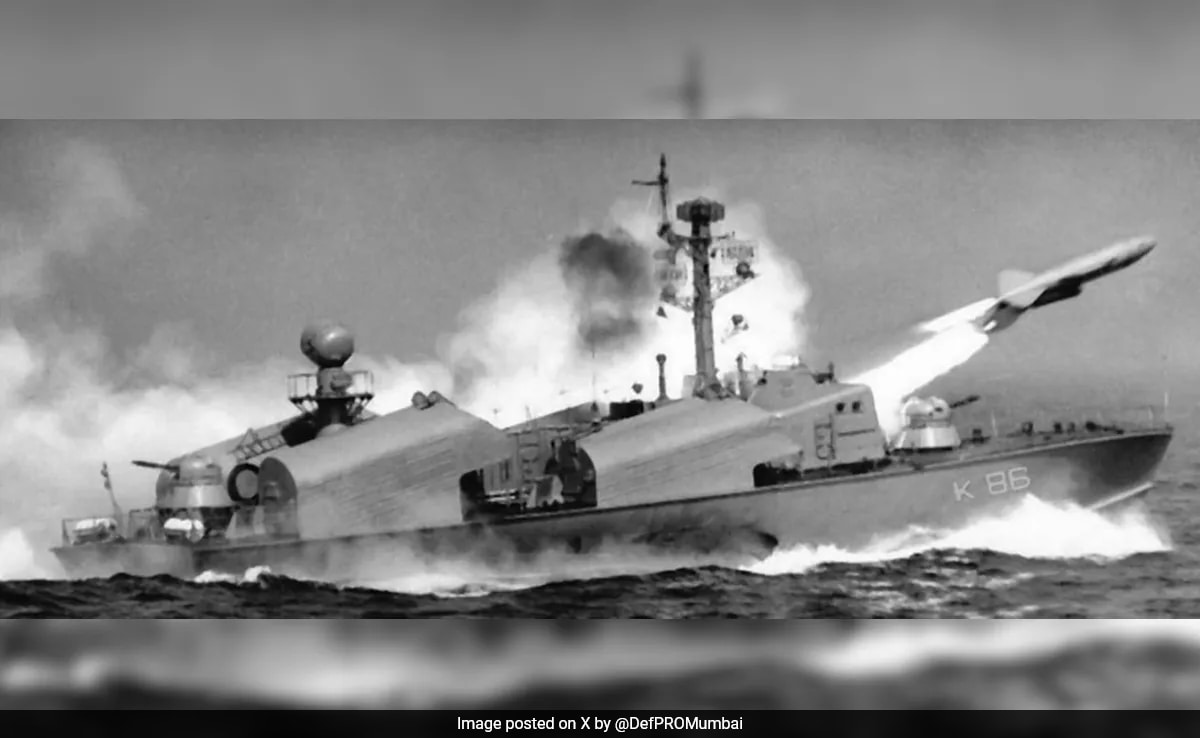
For the first time, anti-ship missiles were used in the region.
In the inevitability of a 1971 war between India and Pakistan, Chief of Army Staff, General Sam Manekshaw, gave Prime Minister Indira Gandhi a paper on which he wrote December 4, the date on which India will go to war with Pakistan. On December 3, Pakistan bombed nine Indian airfields, and the war broke out.
The Indian Navy emerged as a pivotal force in the liberation of East Pakistan. India’s maritime force operated in two theatres – Eastern and Western – and ensured a Naval blockade to break the link between East and West Pakistan.
Operation Trident
The armed forces had been preparing for the war for months. After the air raids by Pakistan, orders were dispatched to the Western Naval Command (WNC) for ‘Operation Trident’. Vice Admiral SN Kohli (Later Admiral) was the Flag Officer C-in-C of the WNC, and orders were given to dispatch the Naval fleet in Mumbai and Okha. The plan was to bomb the Karachi port.
The ‘Karachi Strike Group’ from the 25th Missile Boat Squadron, also known as the ‘Killer Squadron’, consisted of two Petya-class ships – Katchal and Kiltan – and three missile boats – INS Nirghat, Nipat, and Veer. One missile boat was stationed at the Dwarka port to provide cover. The missile boats were armed with four Russian Styx Surface-to-Surface missiles each.
Commander Babru Bhan Yadav, the Killer Squadron’s commanding officer, was ordered to dispatch for an offensive on Karachi port. The plan was to attack Karachi port on December 3, but the air raids by Pakistan occurred in the evening, making it difficult to launch an operation on the same day; therefore, D-day was changed to December 4.
The Petyas were tasked to accompany the missile boats with their suitable radar, provide better targets, and tow a boat in case of an emergency. Before the war, the Pakistan Navy created a 75-mile (120 km) demarcation line for all merchant ships bound for Karachi and ordered them not to operate in that zone between sunset and dawn, and any boat picked on radar would be a Pakistani boat on patrol.
When the ‘Killer Squadron’ strike group reached 112 km south of Karachi, a target was identified northwest at a range of 70 km, and another target was spotted by the radar almost 68 km northeast. The strike group identified them as warships and Styx missiles, with a range of 75 km, were prepared for launch.
INS Nirghat engaged with the target in the northwest and fired two Styx missiles. The Styx destroyed PNS Khaibar. INS Nipat fired two missiles and sank a merchant ship, MV Venus Challenger, which was reportedly loaded with arms for the Pakistani army. INS Veer destroyed PNS Muhafiz, a coastal minesweeper.
In his book Transition to Triumph, Vice Admiral GM Hiranandani gives an analyzed account of the operation. When the strike group started closing in towards Karachi, INS Nirghat’s radar mistook anti-aircraft tracer shells fired as aircraft, which created confusion and fear of a Pakistani air raid.
Karachi Port On Fire
Commander BB Yadav onboard INS Nipat fired his remaining Styx missiles on the Kemari oil refinery and set it on fire. The attack was successful, and no loss was reported. It was the finest hour in the history of the Indian Navy. Four days later, Operation Python was the last nail in the coffin. INS Vinash, Talwar, and Trishul sank PNS Dacca, damaged MV Harmattan and MV Gulf, and the Kemari oil refinery burnt for days. Pakistan Navy’s presence on the western front was in ashes, and India had complete maritime dominance.
For the first time, anti-ship missiles were used in the region. Commander Babru Bhan Yadav was awarded the Maha Vir Chakra for his gallant action, and the Navy celebrates December 4 as ‘Navy Day’ to honour the battle.
The bombing of Karachi port and the oil refinery resulted in a loss of around $3 billion to Pakistan and a massive shortage of oil for Pakistani aircraft. It also cut the Sea Lines of Communication (SLOC) between East and West Pakistan and blocked any supply of US weapons to Pakistan via Karachi.




